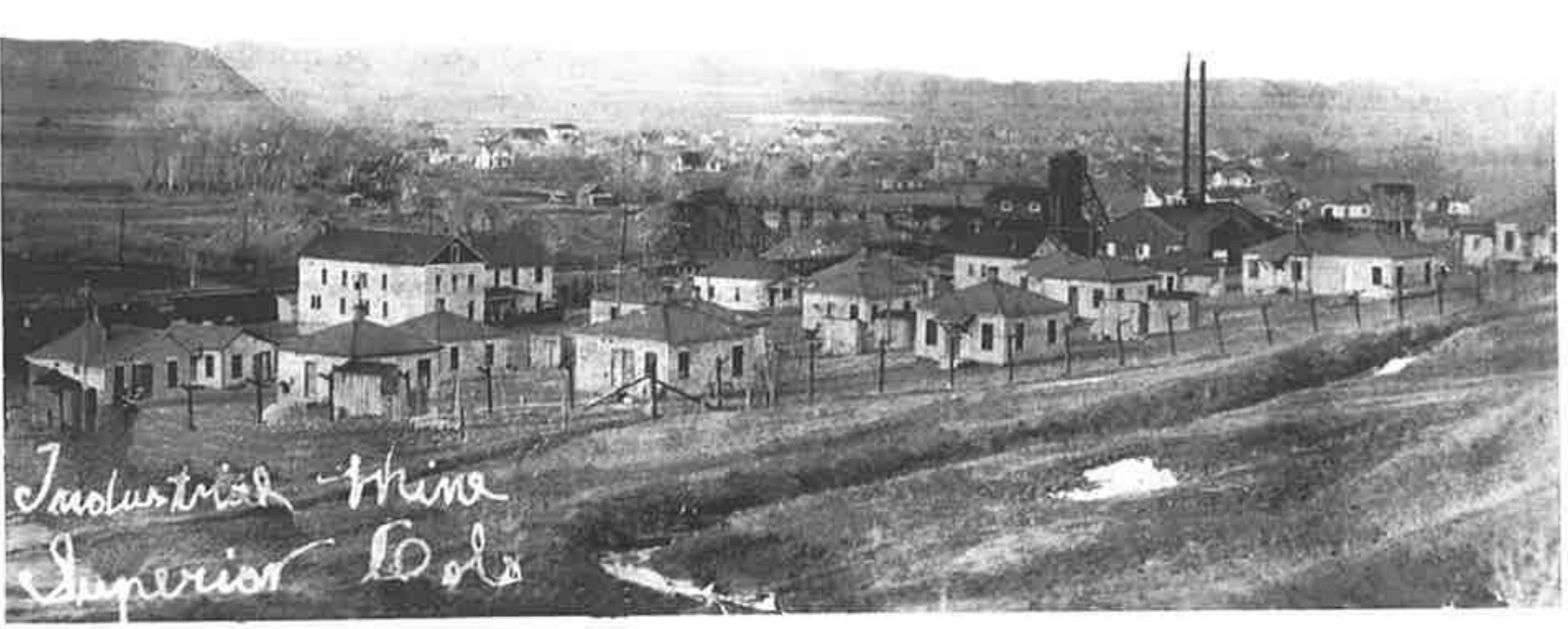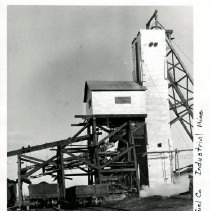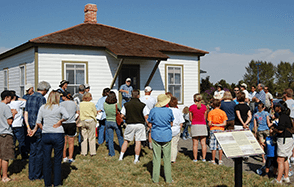
01 Jul A Superior Transformation
The history behind a former mining town turned metropolitan oasis

*Photo courtesy of The Superior Historian
Like any city situated within the front range of Colorado, the Town of Superior has always attracted residents seeking premier lifestyles. However, this gem of Boulder County has not always had the palpable spirit you know today. Originally settled as a coal mining community, Superior has seen many transformative eras which we are excited to share with you today! Join us on a historical tour as we walk through the stories behind local landmarks, modern passageways, and uncover the inspiration behind our iconic logo.
The Great Beginnings
In 1860, William Charles Hake and his wife, Emmaline, came into the Coal Creek Valley to provide agricultural supplies to the mining towns of Boulder County. It was here that he later discovered the rich abundance of coal the town had to offer and in 1892, Hake, alongside Jim Hood, sank a shaft which would later be named the famous Industrial Mine.
of Boulder County. It was here that he later discovered the rich abundance of coal the town had to offer and in 1892, Hake, alongside Jim Hood, sank a shaft which would later be named the famous Industrial Mine.
The first settlers arrived, naming the town for its “superior” quality of coal, and the area transformed into a prosperous coal mining center for nearly half a century. In the years between 1895 to 1945, nearly three million tons of coal were extracted. While production was booming, working conditions were depleting and the eventual push back on low wages and dangerous conditions lead to the mine’s downfall.
*Photo courtesy of Louisville Historical Museum
A Shift in Focus
By 1945, the town began to see a decline in population due to the Industrial Mine closing its doors. Lingering around 250 people, the sleepy little town moved into farming and ranching. This is when Superior became known for its connection to the outdoors and supporting the natural beauty of Colorado. With over 159 acres of open space and trails, this small community became a popular option for locals trying to escape the crowded city spaces.
The year 1952 proved revolutionary with its introduction of the Boulder-Denver Turnpike, otherwise known as U.S. 36, which connected motorists from Denver to Boulder for the first time. This ground-breaking highway system brought substantial business growth to the region including the burgeoning businesses that are still lifting the Colorado economy today.
Continuing the Town’s Legacy
Within the century, Superior has seen major residential and retail development, including the mixed-used community of Downtown Superior.  In creating the master-plan development, we feel it is our responsibility to establish an authentic connection to the history of the area that honors the first residents and workers.
In creating the master-plan development, we feel it is our responsibility to establish an authentic connection to the history of the area that honors the first residents and workers.
“The full crest that we developed incorporates a coal mine structure with the iconic Flatirons in the background,” says creative mastermind behind the Superior township logo, Jesse Pixler. “We also wanted to create a powerful and simple icon that communicated the abstract traditions of coal mining.”![]()
This deeply symbolic vision of the canary reminds visitors and residents of the innate dangers in the pursuit of coal. Miners would carry caged canaries down into the mine tunnels with them to detect dangerous gases, such as carbon monoxide. If these chemicals had collected in the mine, they would kill the canary before killing the miners, thus providing a warning to exit the tunnels immediately.
Preservation
Although many of Superior’s historical buildings have been gone for many years, we will continue to chronicle the town’s rich history for future generations and balance the old with the new. As the community continues to evolve we must remember the vision and purpose that Superior derived from and re-imagine a new legacy where memories are created and the future is embraced.
 Since 1999, the Historical Commission, partnered with the Town of Superior, has worked to preserve and protect the historical treasures in our community. Through their efforts, the committee has restored a 1930s mining home into the Superior Historical Museum (pictured left**).
Since 1999, the Historical Commission, partnered with the Town of Superior, has worked to preserve and protect the historical treasures in our community. Through their efforts, the committee has restored a 1930s mining home into the Superior Historical Museum (pictured left**).
Throughout the four square miles, there are several classic sites to visit, including Asti Park and the Superior Cemetery.
To learn more, check out “The Superior Historian,” a collection of writings that explores the local history of Superior. Since 2003, the Superior Historical Commission has created quarterly publications for residents to connect with the town’s past and spark curiosity.
*Photo courtesy of The Town of Superior
Want in-time development updates and the inside scoop to the #SuperiorLifestyle? Make sure you’re following Downtown Superior on all of our social channels.

